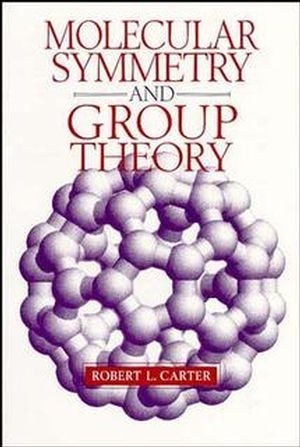
Molecular Symmetry and Group Theory
Seiten
1997
John Wiley & Sons Inc (Verlag)
978-0-471-14955-2 (ISBN)
John Wiley & Sons Inc (Verlag)
978-0-471-14955-2 (ISBN)
A Thorough But Understandable Introduction To Molecular Symmetry And Group Theory As Applied To Chemical Problems! In a friendly, easy--to--understand style, this new book invites the reader to discover by example the power of symmetry arguments for understanding theoretical problems in chemistry.
A thorough introduction to molecular symmetry and group theory as applied to chemical problems. Readers will discover by example the power of symmetry arguments in understanding otherwise intimidating theoretical problems in chemistry. This book demonstrates the centrality of symmetry and group theory to a complete understanding of the theory of structure and bonding.
A thorough introduction to molecular symmetry and group theory as applied to chemical problems. Readers will discover by example the power of symmetry arguments in understanding otherwise intimidating theoretical problems in chemistry. This book demonstrates the centrality of symmetry and group theory to a complete understanding of the theory of structure and bonding.
Robert L. Carter is the author of Molecular Symmetry and Group Theory, published by Wiley.
Fundamental Concepts.
Representations of Groups.
Techniques and Relationships for Chemical Applications.
Symmetry and Chemical Bonding.
Equations for Wave Functions.
Vibrational Spectroscopy.
Transition Metal Complexes.
Appendices.
Index.
| Erscheint lt. Verlag | 18.12.1997 |
|---|---|
| Verlagsort | New York |
| Sprache | englisch |
| Maße | 155 x 231 mm |
| Gewicht | 454 g |
| Themenwelt | Mathematik / Informatik ► Mathematik |
| Naturwissenschaften ► Chemie ► Anorganische Chemie | |
| Naturwissenschaften ► Chemie ► Physikalische Chemie | |
| Naturwissenschaften ► Physik / Astronomie | |
| ISBN-10 | 0-471-14955-1 / 0471149551 |
| ISBN-13 | 978-0-471-14955-2 / 9780471149552 |
| Zustand | Neuware |
| Haben Sie eine Frage zum Produkt? |
Mehr entdecken
aus dem Bereich
aus dem Bereich


